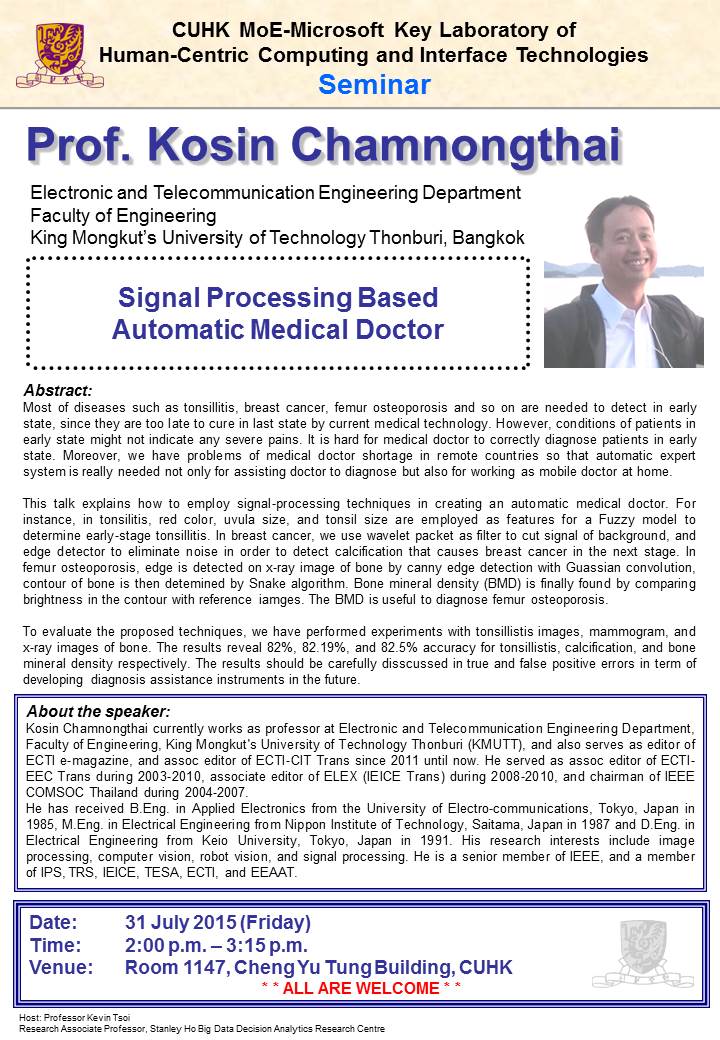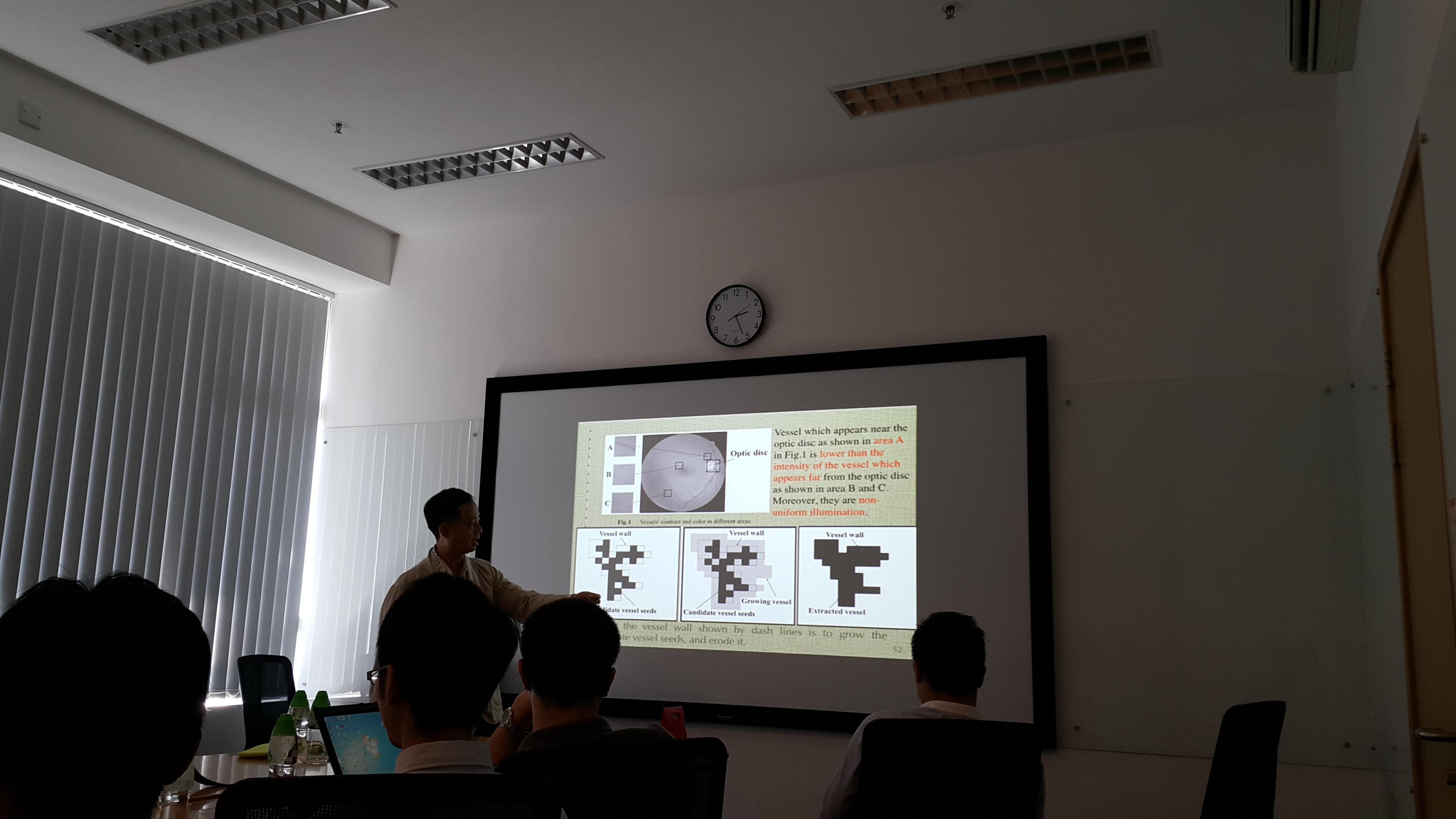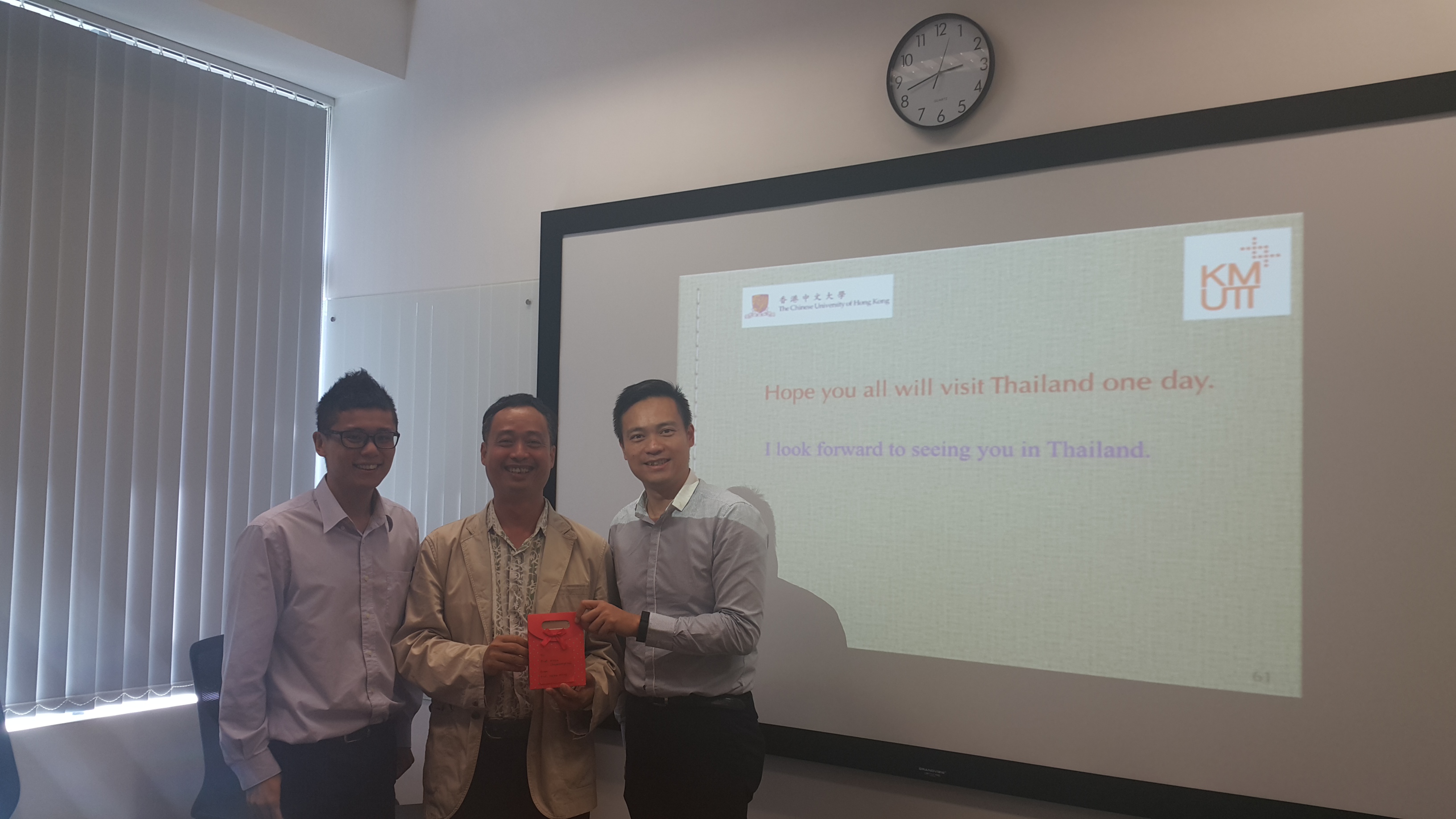Seminar on Signal Processing Based Automatic Medical Doctor
Title: Signal Processing Based Automatic Medical Doctor
Speaker: Prof. Kosin Chamnongthai
Electronic and Telecommunication Engineering Department
Faculty of Engineering
King Mongkut’s University of Technology Thonburi, Bangkok
Date: 31 July 2015 (Friday)
Time: 2:00 p.m. – 3:15 p.m.
Venue: Room 1147, Cheng Yu Tung Building, CUHK
Abstract:
Most of diseases such as tonsillitis, breast cancer, femur osteoporosis and so on are needed to detect in early state, since they are too late to cure in last state by current medical technology. However, conditions of patients in early state might not indicate any severe pains. It is hard for medical doctor to correctly diagnose patients in early state. Moreover, we have problems of medical doctor shortage in remote countries so that automatic expert system is really needed not only for assisting doctor to diagnose but also for working as mobile doctor at home.





